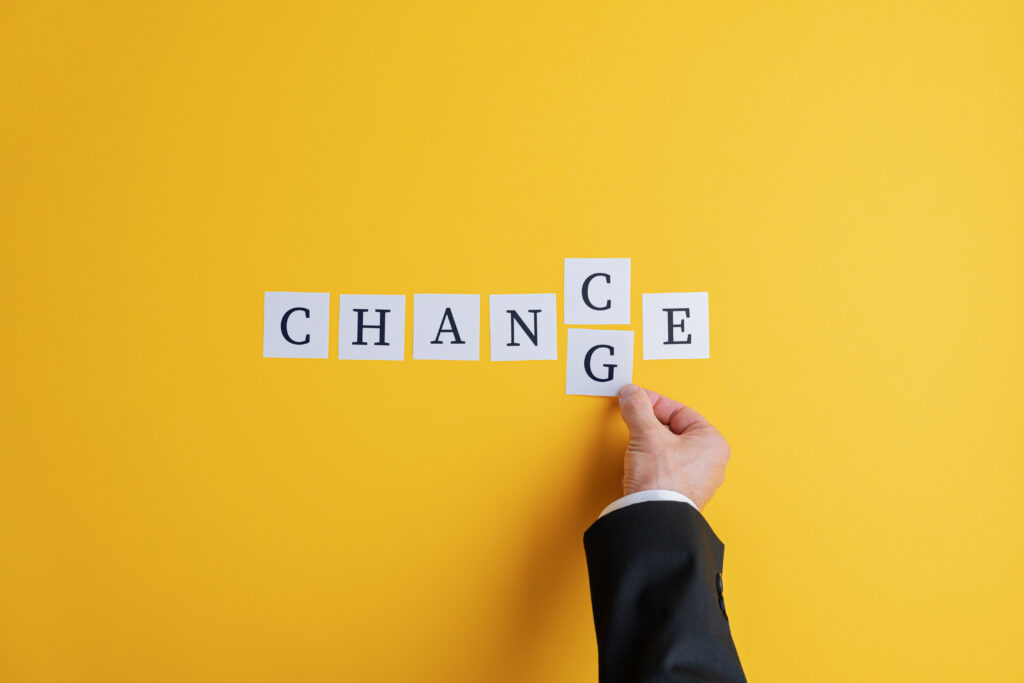Transform Your Life with the Science of Lasting Change
Do you ever feel like you’re stuck in an endless cycle of self-sabotage? If so, the science of lasting change can help you break free and create a better life for yourself.
Through understanding and utilizing the science of change, you can develop the skills and knowledge necessary to enact lasting and positive change in your life. This blog post will explore how to use the science of change to transform your life and make meaningful and lasting improvements. Keep reading!
Understanding the Science of Lasting Change

Have you ever wondered why it can be so difficult to make lasting changes in your life?
The answer lies in the science of lasting change. By understanding the underlying principles and processes behind change, you can gain valuable insights into how to effectively transform your life.
At its core, the science of lasting change recognizes that change is a process that goes beyond simply setting goals and taking action. It acknowledges that true transformation requires a deeper understanding of human behavior, habits, and beliefs. By delving into these areas, we can uncover the keys to creating sustainable and meaningful change.
One important aspect of the science of lasting change is the role of habits. Our habits shape our everyday actions and behaviors, and they can either support or hinder our progress towards our goals. By understanding how habits are formed and how to effectively change them, we can make lasting changes that align with our desired outcomes.
Additionally, setting clear and specific goals is crucial for lasting change. Vague or overly broad goals can be difficult to achieve and can lead to feelings of frustration and discouragement. By setting clear and specific goals, we can create a roadmap for success and stay motivated along the way.
Another important factor in lasting change is identifying and overcoming limiting beliefs. These beliefs can hold us back from reaching our full potential and can sabotage our efforts towards change. By recognizing and challenging these beliefs, we can create a more empowering mindset that supports our goals.
Lastly, strategies for maintaining long-term success are essential for sustained change. Change is not a one-time event but a continuous journey. By developing strategies for maintaining progress, such as accountability systems and self-reflection practices, we can ensure that our efforts towards change are sustainable and lasting.
The Role of Habits in Making Lasting Changes

When it comes to making lasting changes in our lives, our habits play a crucial role.
Habits are the small, everyday actions and behaviors that we repeat without thinking. They have a significant impact on our overall progress towards our goals. Whether we want to eat healthier, exercise regularly, or improve our productivity, our habits can either support or hinder our efforts.
Understanding the science behind habit formation can help us make lasting changes. Habits are formed through a three-step process: the cue, the routine, and the reward. The cue is the trigger that prompts us to engage in a particular behavior. The routine is the behavior itself, and the reward is the positive reinforcement we receive from completing the behavior. By identifying and understanding the cues, routines, and rewards associated with our habits, we can effectively change them.
Replacing old, undesirable habits with new, positive ones is key to making lasting changes. Start by identifying the habits that are holding you back from achieving your goals. Then, focus on creating new habits that align with your desired outcomes. Be intentional and consistent in practicing these new habits until they become second nature.
It’s important to remember that changing habits takes time and effort. Be patient with yourself and celebrate small wins along the way. As you continue to develop positive habits, you’ll gradually see the lasting changes you desire in your life.
The Importance of Setting Clear and Specific Goals

Setting clear and specific goals is crucial for lasting change.
When we have a vague or general idea of what we want to achieve, it can be challenging to stay motivated and track our progress. On the other hand, when we set clear and specific goals, we create a roadmap for success.
Clear and specific goals provide us with a target to aim for. They give us something concrete to work towards, making it easier to stay focused and committed. For example, instead of saying, “I want to exercise more,” setting a clear and specific goal could be, “I will go for a 30-minute jog every Monday, Wednesday, and Friday.”
When our goals are specific, we can also measure our progress more effectively. We can track our actions and see if we’re moving closer to our desired outcome. This measurement helps to keep us motivated and gives us a sense of accomplishment when we reach milestones along the way.
Moreover, setting clear and specific goals helps us prioritize our efforts. We can identify the actions and behaviors that will have the most significant impact on achieving our goals. This focus allows us to allocate our time and energy efficiently, maximizing our chances of success.
In summary, setting clear and specific goals is vital for lasting change. They provide direction, allow us to measure progress, and help us prioritize our efforts. So, take some time to define your goals with clarity and specificity. You’ll be amazed at the impact it can have on transforming your life.
Identifying and Overcoming Limiting Beliefs

We all have beliefs that hold us back from reaching our full potential.
These beliefs, known as limiting beliefs, can be deeply ingrained and have a significant impact on our ability to make lasting changes in our lives. Identifying and overcoming these limiting beliefs is a crucial step in the process of transformation.
To identify your limiting beliefs, start by paying attention to the thoughts and self-talk that arise when you think about making changes. Notice any negative or self-defeating thoughts that may be holding you back. Common limiting beliefs include “I’m not good enough,” “I don’t deserve success,” or “I’m not capable of change.”
Once you’ve identified your limiting beliefs, challenge them. Ask yourself if there is any evidence to support these beliefs. Often, we hold onto these beliefs without questioning them, but upon closer examination, we may find that they are not based on reality.
Replace your limiting beliefs with more empowering and supportive beliefs. For example, if you believe you’re not good enough, replace it with the belief that you are worthy of success and capable of achieving your goals. Repeat these new beliefs to yourself regularly and visualize yourself living them out.
Overcoming limiting beliefs takes time and effort, but it is a necessary step in creating lasting change. By identifying and challenging these beliefs, you can free yourself from their constraints and open up new possibilities for growth and transformation. Remember, you are capable of so much more than you believe, and with the right mindset, you can overcome any obstacle and create the life you desire.
Strategies for Maintaining Long-term Success

So, you’ve made some positive changes in your life using the science of lasting change. Congratulations! But how do you ensure that these changes stick and become a part of your long-term lifestyle? That’s where strategies for maintaining long-term success come into play.
Firstly, accountability is key. Find someone who can hold you accountable for your actions and progress towards your goals. This can be a friend, a family member, or even a coach or mentor. Share your goals with them and ask them to check in with you regularly. Knowing that someone else is aware of your goals and is invested in your success can provide the motivation and support you need to keep going.
Additionally, self-reflection is crucial for maintaining long-term success. Take time to regularly assess your progress, evaluate what’s working and what isn’t, and make necessary adjustments. This could involve journaling, meditation, or simply taking quiet moments to check in with yourself. By reflecting on your journey, you can learn from your experiences and continue to grow and evolve.
Lastly, be kind to yourself. Change is not always easy, and setbacks are a natural part of the process. If you stumble along the way, remember that it’s okay. Treat yourself with compassion and forgiveness, and get back on track with renewed determination. Remember, you are on a continuous journey of growth and improvement, and maintaining long-term success is about progress, not perfection.
So, as you continue on your path of lasting change, remember to stay accountable, engage in self-reflection, and be kind to yourself. With these strategies in place, you can navigate any challenges that come your way and ensure that your positive changes endure for the long haul.
Ready to sell your property? Give us a call today and learn more about our professional photography services and marketing that can boost your property listing!
Plus, explore our virtual assistant coaching program to level up your business. Don’t forget to tune into our new podcast for even more valuable insights!
